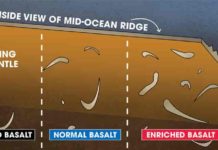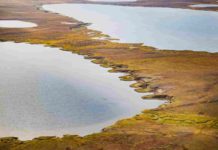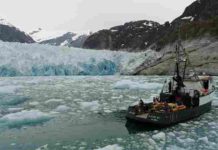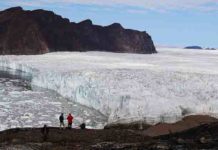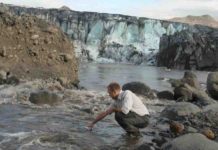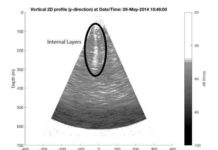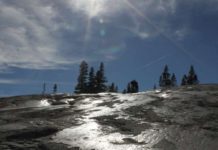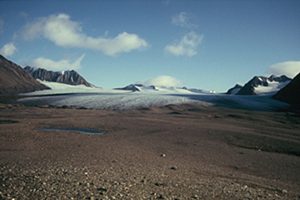
Credit: Łukasz Stachnik
Ph.D. student Lukasz Stachnik received funding from the Arctic Field Grant (AFG) in 2012 and 2013. He has, together with colleagues from HiSF and University of Silesia, published an article in the Journal of Hydrology that deals with chemical processes of Werenskioldbreen (SW Svalbard) during ablation season.
He has also published an article titled “Glacier naled evolution and relation to the subglacial drainage system based on water chemistry and GPR surveys (Werenskioldbreen, SW Svalbard).”
Arctic Field Grant (AFG) 2012 and 2013 recipient Lukasz Stachnik and his colleagues from Norwegian and Polish institutions have published new articles on chemical denudation in the Werenskioldbreen catchment (SW Svalbard), showing an ongoing acceleration of biogeochemical processes.
Chemical denudation, which is a process of rock weathering and transport of dissolved solids, plays an important role in global biogeochemical cycles. Among others, there are two geochemical processes of global importance associated with glaciers – long-term sequestration of atmospheric CO2 due to silicate dissolution and CO2 decrease in seawater due to delivery of bioavailable iron to oceans from dissolution processes in glacierised basins.
“Determination of chemical processes under subglacial conditions and in the proglacial zone was the main focus of our research,” Lukasz states. Fieldwork of his research team was conducted in front of Werenskioldbreen near the Polish Polar Station in Hornsund. During extensive sampling campaigns Lukasz and his colleagues collected water, ice and snow samples, and carried out discharge measurements and ground penetrating radar (GPR) surveys during both the accumulation and ablation seasons.
“Overall, we found that the rate of chemical denudation in the Werenskioldbreen catchment was one of the highest in Svalbard and was caused primarily by high discharge and secondary by rapid chemical weathering,” Lukasz says.
“Our studies include simultaneous water sampling in the proglacial zone and from subglacial outflows, which is still an uncommon approach in glacier hydrology research. This sampling strategy enabled us to distinguish processes in the glacial system,” he says.
“Under subglacial conditions we found that sulphide oxidation, the main reaction producing bioavailable iron, is sourcing the subglacial channels more effectively than in subartesian outflows that were previously considered as having high rates of chemical weathering. In a long-term perspective, we think that expansion of subglacial channelized systems due to increased water delivery is going to drain higher loads of dissolved solids, including bioavailable iron, from the drainage system rather than inhibit chemical denudation due to quick flow through the subglacial drainage system.”
“Our research suggests a new biogeochemical coupling in the proglacial zone. Despite sulphide oxidation is a predominant reaction there, carbonate dissolution driven by atmospheric CO2 (defined as carbonation) causes high loads of Ca2+ and Mg2+. This reaction, in contrast to carbonation of silicate, has little effect on long-term CO2 sequestration. In a global perspective, loads of Ca2+ and Mg2+ may, however, have an influence on the environment in other way (i.e. by inhibiting an effect of ocean acidification by increase of seawater saturation with aragonite),” Lukasz concludes.
Lukasz Stachnik, principal investigator of two AFG projects, recognizes that further development in understanding of role of glaciers in global biogeochemical cycles will aim to determine the relationship between land-terminating glaciers and coastal waters.
Reference:
Łukasz Stachnik et al. Chemical denudation and the role of sulfide oxidation at Werenskioldbreen, Svalbard, Journal of Hydrology (2016). DOI: 10.1016/j.jhydrol.2016.03.059
Łukasz Stachnik et al. Glacier naled evolution and relation to the subglacial drainage system based on water chemistry and GPR surveys (Werenskioldbreen, SW Svalbard), Annals of Glaciology (2016). DOI: 10.1017/aog.2016.9
Note: The above post is reprinted from materials provided by The Research Council of Norway.


